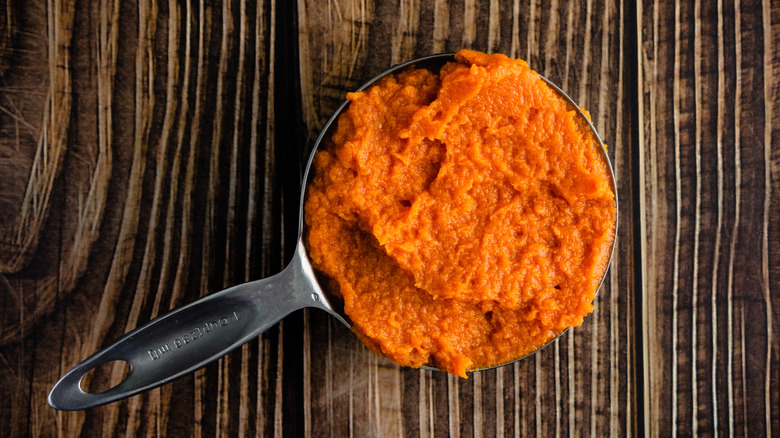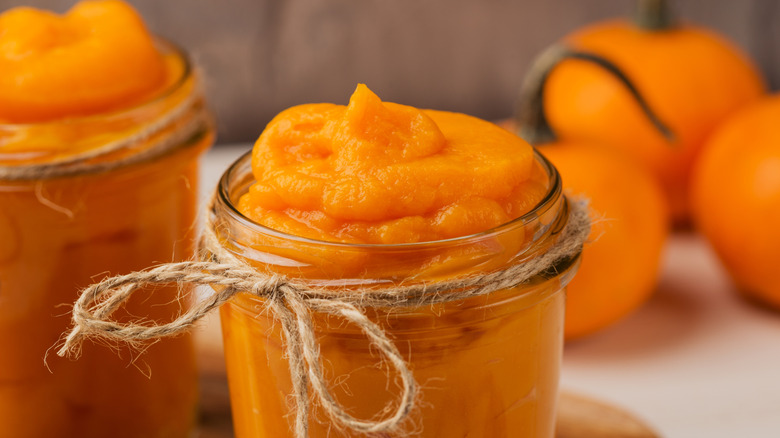The Mistake You're Making Whenever You Use Canned Pumpkin
Canned pumpkin is a tried-and-true, time-saving kitchen hack for soups, sauces, and seasonal baked goods. Rather than hauling your pumpkin or squash home, finding your biggest knife to slice it, roasting it in the oven over a long period of time, then dragging out your blender to purée it until smooth, you can simply reach for a convenient can or two in your pantry. But there's a reason home chefs sometimes opt to undertake all that manual labor listed above — roasted pumpkin has a deeper, richer flavor that pumpkin straight out of a can can't replicate. Or can it?
Using canned pumpkin isn't a mistake, but using it straight from the can certainly is. Although you can happily skip the pumpkin purchasing, slicing, and blending, roasting your canned pumpkin purée will reincorporate those buttery, toasted caramelized flavors that only heat can provide. That heat has another benefit: removing some of the canned pumpkin's moisture. Particularly for a simple pumpkin pie, where a can of purée usually creates more filling than you need and you're already running interference to prevent a soggy crust, a less-moist purée helps create a creamier, custard-like texture.
To bake your canned pumpkin to perfection, spread out as much of your canned purée as the recipe calls for directly on a baking sheet (the loss of moisture isn't enough to require more purée). Roast at 400°F for about 15 minutes, or until the edges and peaks of your pumpkin purée start to brown. Let the purée cool slightly before using.
More tips and tricks when using canned pumpkin purée
Many recipes that call for canned pumpkin also incorporate a few flavorful spices, which help take the edge off of that raw pumpkin flavor. After roasting and cooling your pumpkin purée, you can add it to your recipe as normal. But, in the same way you'd spice and reason a nut, meat, or vegetable before roasting, it's also helpful to add your pumpkin pie spice seasonings to your layer of purée before roasting. By adding the sugar and spices you need directly to the pumpkin before baking, you're infusing your purée with flavor. The result is a subtle, balanced, buttery richness that will help your pumpkin desserts standout from the more standard seasonal fare.
If you're cooking for a crowd or can't fit one more baking sheet into your crowded oven, there's more than one way to add heat. Cooking your canned pumpkin purée in a skillet on the stovetop, along with its sugars and spices, will also help cook off that raw squash flavor, reduce moisture, and heighten the more nuanced flavors found in pumpkins. Try it out on your next pie or pumpkin loaf to see if you can taste the difference.

